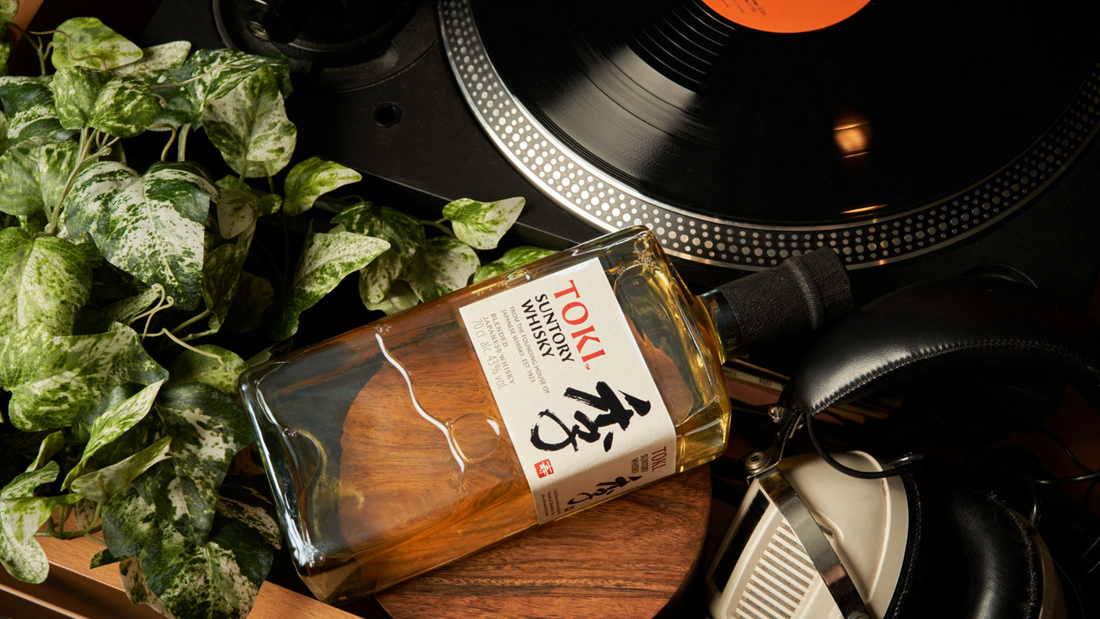
Five Whiskies Beside the Music
By Rafi Mercer
Step into a true listening bar — the kind that takes its cues from Tokyo’s jazz kissaten — and you’ll notice the details. The shelves of vinyl, the careful lighting, the way the sound fills the room like water. And then, off to the side, the bottles. More often than not, whisky plays its role in the ritual. Not because it’s fashionable, but because whisky matches the listening ethos: slow, deliberate, complex, never rushed.
Here are five whiskies you’ll typically find behind the bar if the venue is doing it in the truest sense — bottles chosen not for show, but for the way they carry story, craft, and atmosphere.
1. Yamazaki 12-Year (Suntory, Japan)
The cornerstone of Japanese whisky, and the most common bottle in a kissa. Smooth, layered, with notes of honey, orchard fruit, and subtle oak. Yamazaki 12 isn’t about power — it’s about refinement, much like the sound systems in these bars. Sip it neat and you’ll notice how it unfolds slowly, just as a Coltrane ballad does when played on a horn speaker.
2. Hakushu Distiller’s Reserve (Suntory, Japan)
If Yamazaki is the warmth of wood and fruit, Hakushu is the freshness of air and water. Lightly peated, crisp, almost herbal. It feels alive, like a walk through a forest at dusk. In the right setting, Hakushu pairs beautifully with ambient records or stripped-down piano works — drinks and sounds that open space rather than fill it.
3. Nikka From the Barrel (Nikka, Japan)
A bottle you’ll see often in Tokyo bars, square and compact, its liquid powerful and direct. At nearly 51% ABV, it carries a punch, but with balance: caramel, spice, dried fruit, smoke. It mirrors the energy of bebop or funk — bold, restless, rhythmic. This is not a background whisky; it commands the same kind of attention as the records it sits beside.
4. Hibiki Harmony (Suntory, Japan)
The name says it all. Hibiki is a blend, a weaving together of different malt and grain whiskies, and it’s known for its balance and elegance. Floral, sweet, a touch of oak. If Yamazaki is Coltrane and Hakushu is Satie, then Hibiki is Bill Evans — thoughtful, harmonious, endlessly listenable. Many listening bars pour it not as an indulgence, but as a house standard.
5. The Macallan 12-Year Sherry Oak (Scotland)
Though Japanese whisky dominates the tradition, a true listening bar often keeps a classic Scotch on hand, and Macallan 12 is the one you’ll find most often. Rich, sherried, with layers of dried fruit, spice, and chocolate. It’s a whisky for late nights, matching the depth of a deep blues record or the richness of Nina Simone’s voice. A reminder that the whisky culture in Japan grew out of reverence for Scotland — and that the two traditions remain entwined.
Together, these bottles tell a story. Japanese whisky at the centre, Scottish whisky at the root, each one chosen for its ability to mirror the listening ethos: slow craft, deep flavour, patience rewarded. None of them shout. None of them rely on novelty. They are classics, the kind of whiskies that sit quietly until poured, then reveal their character sip by sip.
And that’s the point. In a listening bar, the drink is not the star — the record is. But the drink is part of the ritual, shaping the pace of the evening, reminding you to pause between tracks. A good whisky holds you in the same way a record does: you lean in, you notice, you allow time to unfold.
So if you find yourself in a true listening bar, don’t be surprised to see these bottles lined up, their labels familiar, their presence understated. They belong there, just as the records do. And if you pour one at home, glass in hand, record spinning, you’ll understand why.
Rafi Mercer writes about the spaces where music matters. For more stories from Tracks & Tales, subscribe here, or click here to read more.


